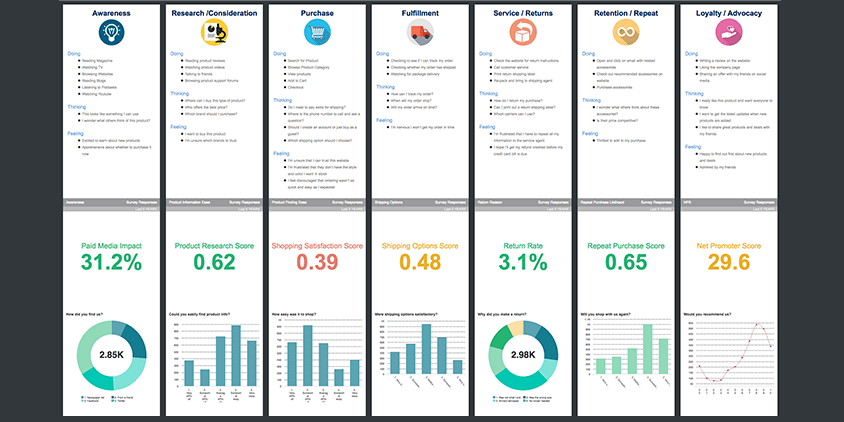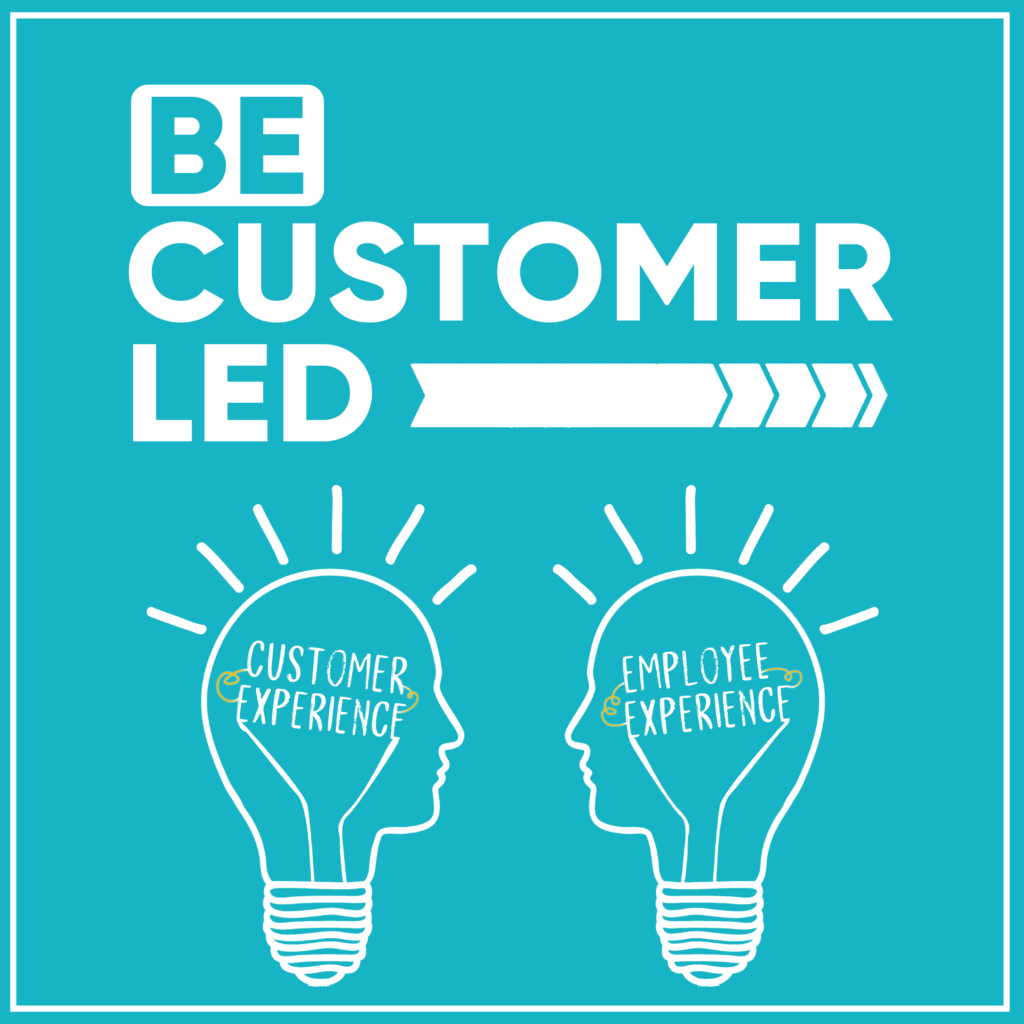If you’re not familiar with what a customer journey map is, here is a simple definition without all of the Customer Experience (CX) jargon in the middle of it: journey maps are timeline-driven, (often) non-linear diagrams that highlight the steps your customers go through when engaging with your company – product, service, digital, and analog. Some companies have one journey, while others have dozens; it comes down to the complexity of your business.
Journey Maps are useful tools to:
- Get everyone in your organization to understand what the customer is doing at each stage of the journey
- Capture satisfaction throughout the journey
- Identify customer motivations or emotions at each stage
- Highlight barriers you’re putting up against customers that don’t allow them to finish the journey (think Sales, Contact Center, Web, Digital Tools, etc.).
If you’re looking to fix something in your company, a Journey Map is a great way to start thinking about the “what” and the “why.” While Journey Maps are a great visual representation of what your customer is going through, they only tell a part of the story. So like all tools, take them with a grain of salt. What makes them tell the whole story? Data. And Journey Maps love data. Why?
If you’re not already, I highly recommend you start appending both sentiment and behavioral data to your journey maps; and down to the activity level, ideally. Once you do, you can use sentiment data to light up each activity red/amber/green to quickly identify your problem areas. You can also use the sentiment score to prioritize where you start work first. As many CX teams don’t have unlimited resources, using sentiment to prioritize your focus is crucial. Not only can you identify where you have the greatest opportunity to prioritize resources, you can also dynamically prioritize your book of work, and measure your performance and impact along the way.
So where do you start, or how do you know which journey to map first? My counsel has always been to start with where your company is making the most money. Why? Your largest-volume business also, typically, has the largest-volume money leaks. So can you prioritize resources, build a book of work and measure performance as mentioned before; but you can now highlight tangible value of your team to the business by plugging up those lost revenues.
Some in the CX community might say you should start with the journey most important to your customer, and there is merit to this argument. But I say start with that one next, as you’ll likely need funding for that work, and a quick way to get funding is to save your company money first. In the process, you’ll also prove to your CEO, or other senior leaders, that you have strong business acumen. And when you combine a human-centered approach to business acumen, you’re setting yourself, your team, and your customers up for success.
I hope you found this post a little bit useful and it helps you get a little bit better each day!
Want more? Listen to Be Customer Led where ever you listen to podcasts. Links to all content can be found on Link Tree.

